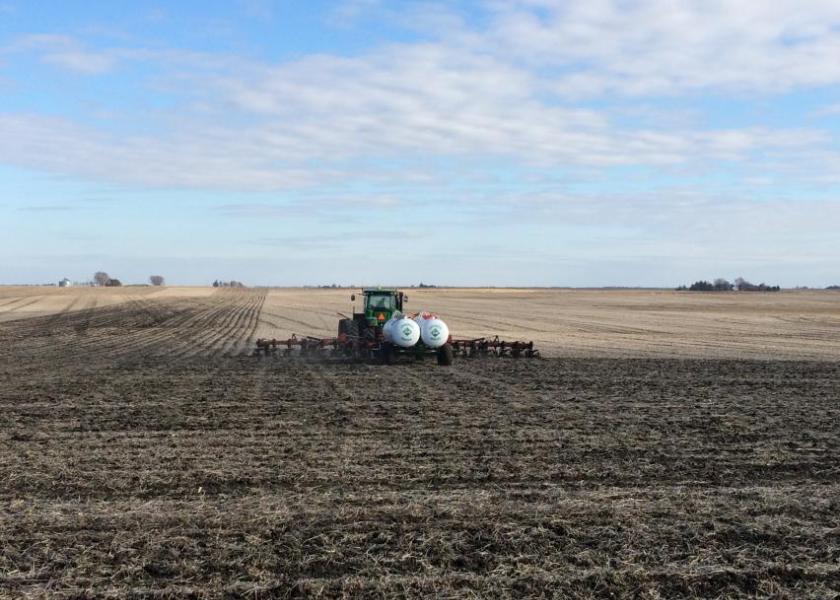Best Practice Do’s and Don’ts for Anhydrous Ammonia Applications

With harvest wrapping up in many parts of the Midwest, it’s only natural that farmers are thinking about fall field practices they want to complete now. However, one of those is underway too early in parts of Iowa, according to Angie Rieck-Hinz.
“There’s a lot of anhydrous going on fields too early, it’s just too warm and dry yet,” says Rieck-Hinz, a field agronomist in north-central Iowa for Iowa State University Extension.
Instead, she advises growers to wait until soil temperatures are no more than 50 degrees Fahrenheit – and trending downward – before making anhydrous ammonia (NH3) applications for the next year’s corn crop. Plus, soil moisture conditions need to improve in the state which saw a lot of dry conditions over the summer.
“The lower temperatures will delay conversion of the ammonium to nitrate and reduce leaching losses with high rainfall this fall or next spring,” she told Chip Flory, host of AgriTalk on Wednesday. “What we want to do is hold off so we can maximize our nitrogen use and the dollars invested.”
Evaluate Soil Temperatures
To get a good sense of soil temperature, Rieck-Hinz says to measure it at about 10 a.m. or 7 p.m. CST.
Another option for Iowa farmers is to check the ISU Iowa Environmental Mesonet which now shows past and future trends. It should be noted that nitrification inhibitors are not a substitute for proper placement depth or timing of anhydrous ammonia, she says.
Rieck-Hinz adds that If soil conditions are questionable, make a pass around the field. “If you can smell ammonia, make adjustments to equipment or wait until conditions are more suitable,” she advises.
Scenarios To Avoid
When you apply anhydrous ammonia, look for whether the application causes cloddiness, or large air pockets or lack of covering the knife track during application, stop application and wait for better conditions.
"While fall application of anhydrous ammonia in good soil conditions rarely causes concerns for seedling damage in the spring, we did see impact of fall 2022 anhydrous application on 2023 planted corn," she says.
Conversely, application under really wet conditions can cause the knife track to smear and some ammonia will volatilize because of inadequate closure of the knife track. Avoid application under too dry or too wet soil conditions.
Don’t make a shallow application with the idea that any rain we do get will prevent volatilization. Keep application depth at your normal placement depth.
You can get more of Rieck-Hinz’ recommendations in her online article here.
Rabobank: Global Fertilizer Market To Provide Affordable Supply Through 2024
Right to Farm: Tennessee Farmers Fight Chicken Litter Ban







